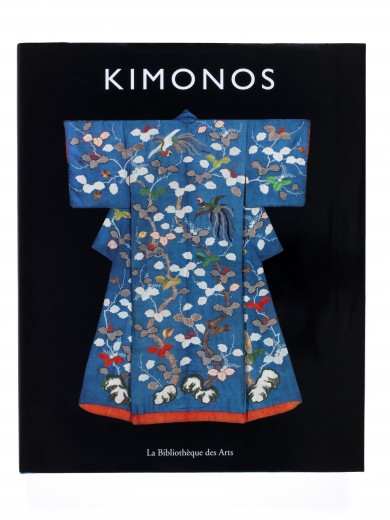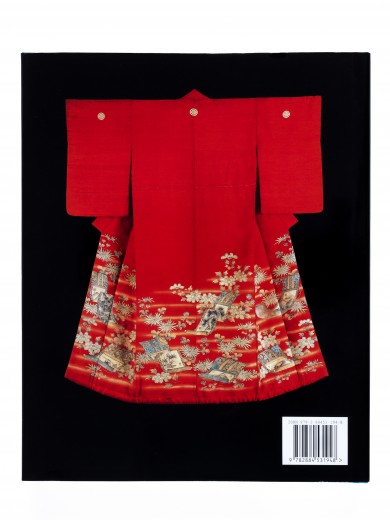


The Khalili Collection of kimono, which comprises more than 450 garments and spans 300 years of Japanese textile artistry, brilliantly conveys the remarkable creativity of designers who used the surface of the garment to produce a wearable work of art. An enormous range of patterns and motifs were executed in an often complex combination of weaving, dyeing and embroidery techniques, some garments requiring the expert skills of a number of different artisans. The Khalili Collection includes formal, semi-formal and informal kimono, undergarments and jackets, worn by women, men and children. Represented are the sophisticated garments of the imperial court, samurai aristocracy and affluent merchant classes of the Edo period (1603–1868); the shifting styles and new colour palette of Meiji-period dress (1868–1912); and particularly the bold and dazzling kimono of the Taisho (1912–26) and early Showa (1926–89) periods which utilized innovative techniques and drew fresh inspiration from both past traditions and the modern world.
Anna Jackson – Keeper of the Asian Department, Victoria and Albert Museum, London
Contributors:
Professor Nagasaki Iwao – Kyoritsu Women’s University, Tokyo
Professor Timon Screech – Professor of the History of Art, School of Oriental and African Studies, University of London
Dr Chrstine M. E. Guth – Asian Specialism Tutor, Royal College of Art, London
Professor Kendall Brown – Professor of Asian Art, California State University, Long Beach
319 pages fully illustrated in colour; hardback with dust jacket; Translated by Anne de Thoisy-Dallem
Editions La Bibliothèque des Arts
30 x 24 cm
ISBN: 978-2-88453-194-8


Please register your email to download a pdf of this book.